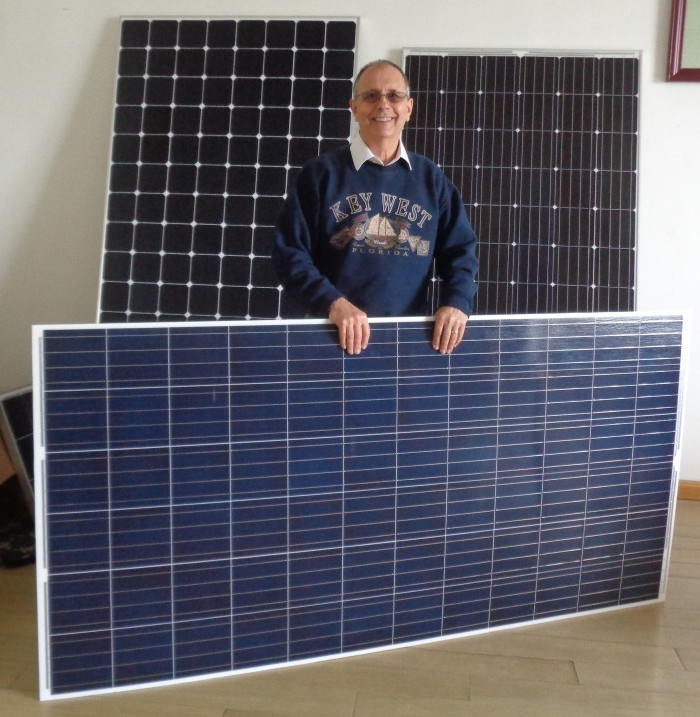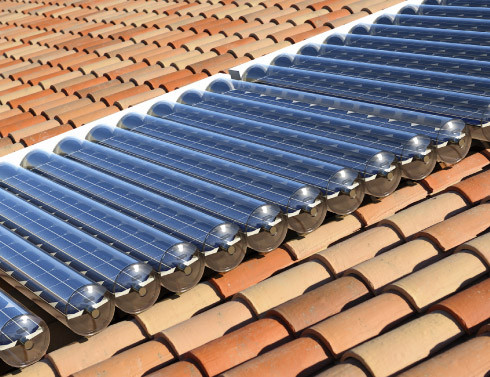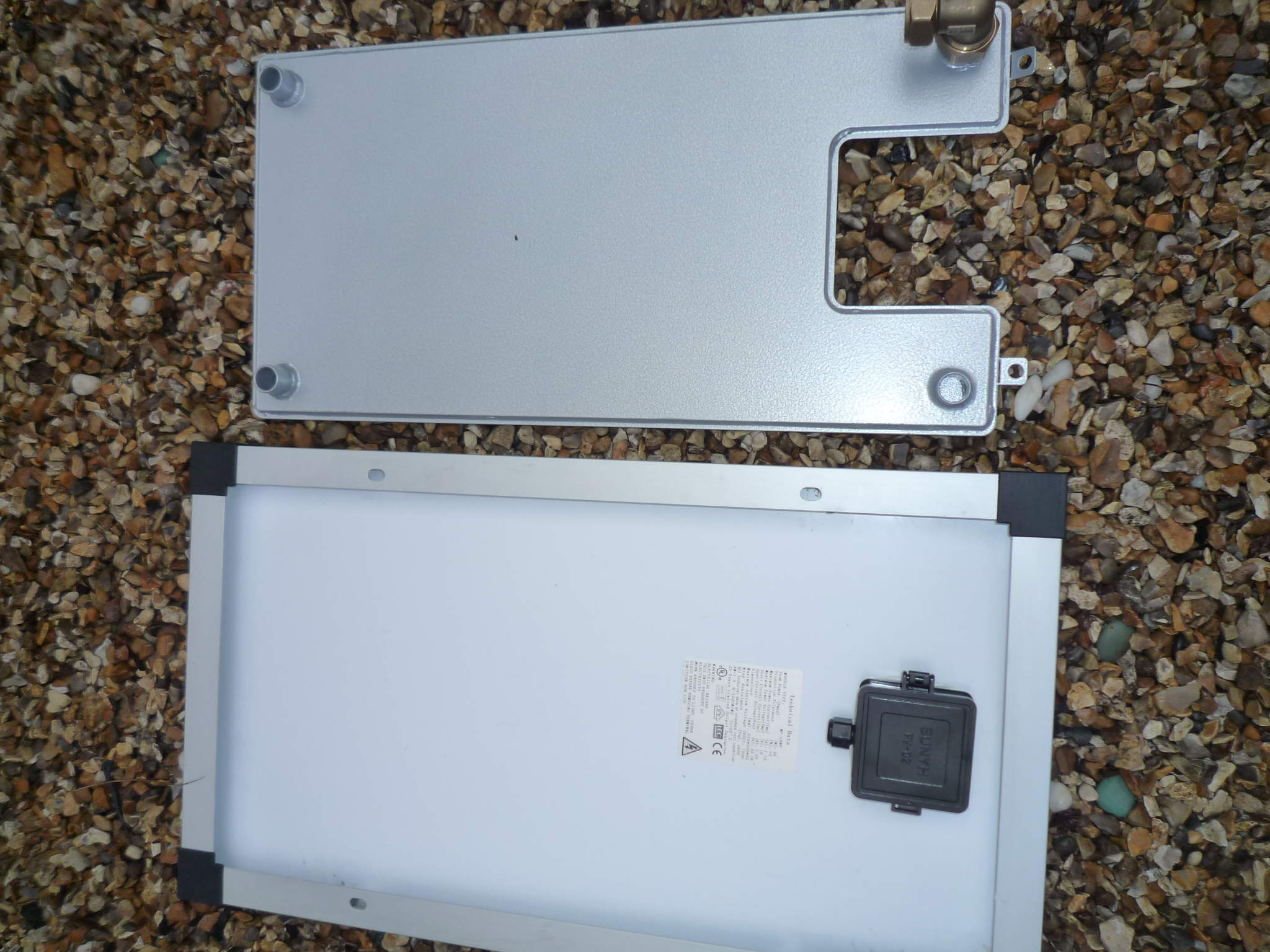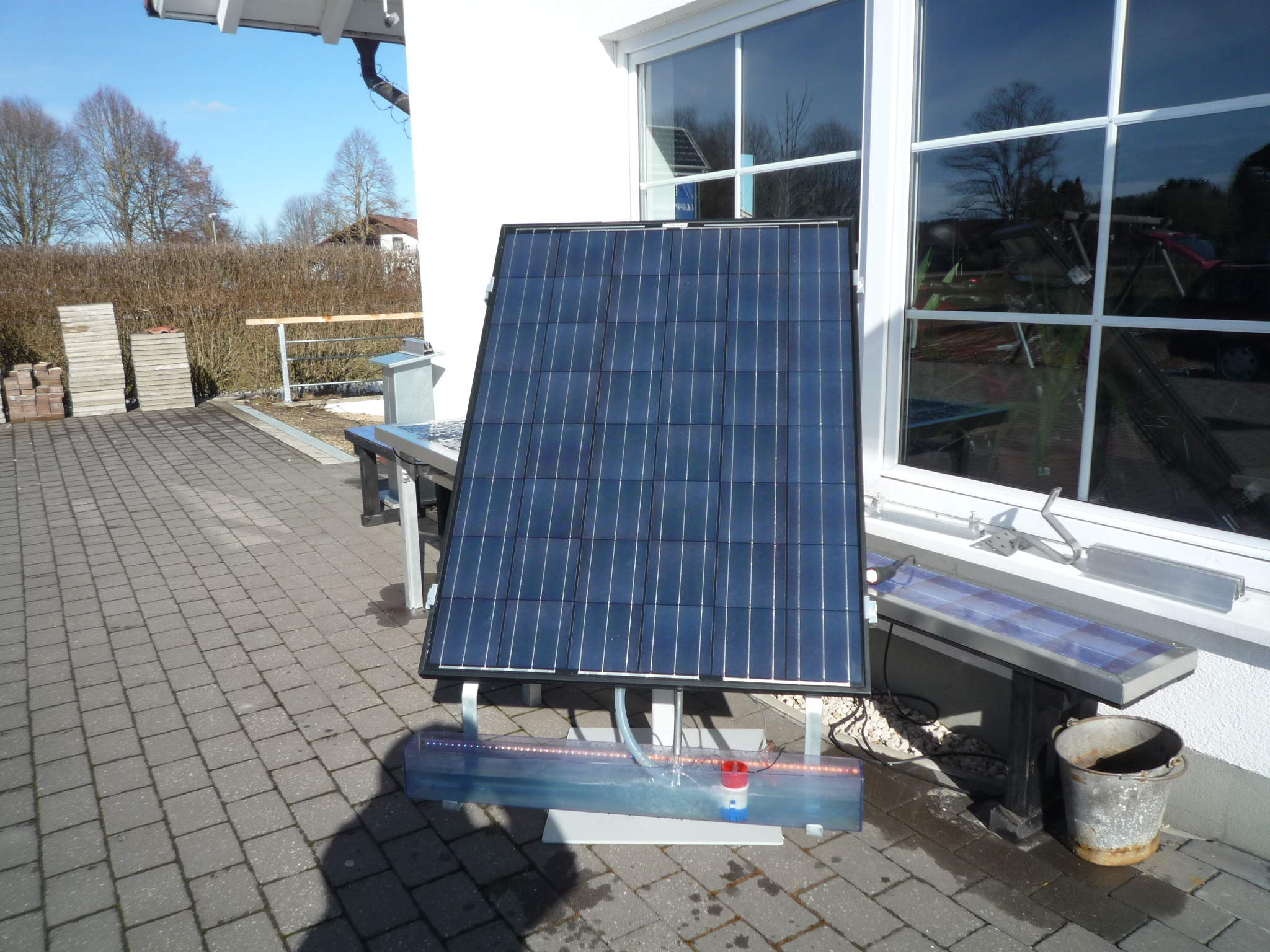https://www.pvtlab.com.au/
Below is another interesting over veiw from Dave on You Tube, about the global benifits of PVT to create pre heated hot water from cooling down the back of PV panels
https://youtu.be/Ow0BHlSZg5M
Below is the latest on PVT from Solar Heat Europe, where PVT is well established
http://solarheateurope.eu/wp-content/uploads/2022/12/SHE-PVT-webinar2022-slides.pdf
Some history behind my own experiance and the design of a solar thermal panel that converts PV to PVT
The first PV + thermal (PVT) solar hybrid panel was developed in Germany in 2007/8 and shown to the trade at Intersolar Germany. At that time, the cost of PV panels was very high, but the Munich based manufacture i later visited had developed a way using automotive robot bonding, to bond a thermal water panel to the PV frame free glass panel.
Since that time, many other PV and flat plate solar panel manufactures have developed there own idea of PVT, including a UK company developing a PVT evacuated tube collector.
The following pages, PDF files and pictures will open up the debate that is going on across the world, from China to the USA, from the UK to Europe and beyond and what the future of PVT holds in the future.
The idea to couple together a solar PV panel with a solar thermal panel into a PVT solar panel was to circulate cold water through the back of the PV panel to cool it down below 26c with a pre heat warm water benefit of up to 30c.
The figure 26c is the temperature that all the worlds’ solar PV panel manufactures use to calculate the efficiency of each PV panel they produce, conducted in a controlled air temperature facility. Each PV panel comes with its own certified test label.
It’s a worldwide proven fact that once the temperature of the solar cells increase above 26c, the efficiency begins to drop.
The German manufacture produced such figures to demonstrate this and it’s through that company with others following, that we now have 56 companies across Europe promoting such a PVT hybrid solution with 2 established in the USA.
The drop box down load demonstrates this in a power point
presentation as a PDF, where it’s been proven that the glass encapsulating
solar cells can heat up above 60c in air temperatures of 32c with clear blue
skies.
At this temperature the efficiency of the solar PV panel drops by 0.05%
for every 1 degree rise above 26c. Even in a very cold air temperature, glass
solar panels can still heat up above 40c.
Unfortunately, the PV panel manufactures are not interested, as they see the increased cost and delay in the installation of PV only as adding a cost to the sale of their PV panels. This lack of knowledge and working experience of a much wider use of solar thermal panels is why there is little interest to date, but this is changing fast, since the establishment of the EU funded TASK60 programe.
You then have the solar thermal industry, fighting the solar PV industry for sales “to retain a solar water heating industry” but instead of looking beyond mass produced flat plate solar water heating collectors, where some just look to change the glass to a PV glass is where the problems begin.
I hope to break all this down over the next few pages with facts, pictures and PDF files written up years ago, along with you tube videos’
Up until 2016, the majority of PVT solar panels use the mass produced glass PV panels, to attach a solar thermal panel to the back. The far right hand picture above consists of a standard PV framed panel which accommodates a slim metal frame plate panel, where a water/glycol mix is pumped into the absorber exchanger as a closed loop system developed by a German in 2014. The 2nd picture is similar to what Sundrum Solar in the USA has developed, similar to this German thermal steel panel sold separate to the brand of PV panel you select. The 1st picture from the top left, is the only company (UK) who had the idea to embed solar PV cells onto the copper heat pipe sealed inside an evacuated tube (This UK company managed to secure over €1 million from the EU and a further £350,000 from DECC in the UK to date (15/04/2017)
This is the final part of the section that relates to PVT solar panel types, to be followed by WHAT ARE THE SYSTEM OPTIONS in order to maximize the use of the generated DC electricity as well as the by product of heated water to 30c.
What was proven in the early days of marketing the PV+T concept was that the heated water that flowed across the back of PV panels to heat swimming pools was its ideal use to offset the use of a gas/oil boiler or a heat pump.
What was proven beyond any doubt, is that when you have a large water store volume, open to gravity, with the right amount of PVT panels, over an 8 hr day during the summer months in the Northern climate, that the pool water volume would never over heat above 30c. Many manufactures of PVT collectors continue to boast high temperatures of thermal hot water to above 80c, which affects the efficiency of the PV side of the collector, defeating the concept.
The sizing of the water storage tank and the plumbing of the system, I will present after completing this part of the facts.
During recent tests in my back graden between glass PV panels with a plastic film backing and the NEW glass free PV panels with the aluminum backing, the temperatures I recorded both at the same position to the sun, on a clear blue sky day in the South of England in June 2017, was to show that the back of the glass panel maximum temperature reached 62.4c while the glass free with aluminium backing reached 64.4c
To keep up to date on what is happening in the solar PVT market, click onto the link below, which takes you to the NEW Task60 PVT web site.
Update 09/09-2019
Introducing the COOLSHEET, manufactured in Australia
The
Coolsheet panel has an International PCT Patent filing after a number of Design changes, the system has been designed from the ground up to be light
weight, installer friendly and cost effective. A successful pilot system has
been operational for over 2 yrs, with a large scale commercial system to be completed ?
We are now into 2023, and when I have new news I am provided by the Australia Company, I will post updates
Below is the latest video on you tube of the PVTLab Cool Sheet solar hybrid panel
If anybody is interested in the purchase of a PVT solar panel, contact me, so I can provide one of my updated and very efficient Thermal Store system that works together with the Caplin PVT solar panels and heat pumps







